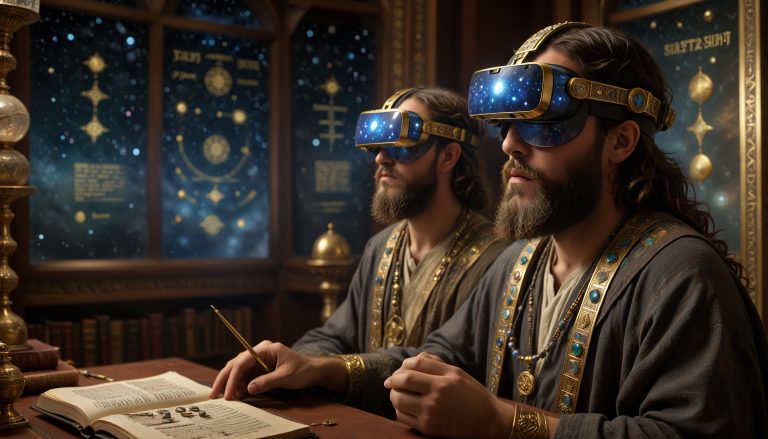In a tale that blurs the lines between myth and reality, the scientific community remains captivated by the mysterious disappearance of an expedition aimed at discovering the fabled Hollow Earth. This expedition, spearheaded by renowned geologist Dr. Edward Caldwell, embarked on a daring journey in late 2023 to uncover an entrance to the Earth’s inner realms—a quest that has intrigued adventurers and scientists for centuries.
The concept of a Hollow Earth, with vast internal cavities potentially housing undiscovered ecosystems or even ancient civilizations, has long been dismissed by mainstream science. However, Dr. Caldwell and his team believed that recent geological anomalies and satellite data indicated a possible entrance in the remote Arctic region. Armed with state-of-the-art technology and an unyielding spirit of exploration, the team set off with high hopes and international media coverage.
The expedition comprised fifteen members, including geologists, climatologists, biologists, and seasoned explorers. Their journey began smoothly, with regular updates highlighting their progress and discoveries of unusual subterranean features. Excitement peaked when they reported finding an extensive cave system that appeared to plunge deep into the Earth’s crust.
However, communications abruptly ceased after this report. Despite extensive search and rescue efforts by multiple nations, no trace of the expedition has been found. The disappearance has sparked a myriad of theories, ranging from natural disasters such as sudden ice shifts or underground collapses, to more fantastical explanations involving encounters with unknown entities or advanced underground civilizations.
The scientific community is left with more questions than answers. While the expedition’s fate remains a mystery, it has reignited interest in the Hollow Earth theory, prompting a new wave of research and exploration. Dr. Caldwell’s family and colleagues continue to advocate for ongoing search efforts, holding onto the hope that the team might still be found.
As the world waits for answers, the tale of the Lost Expedition to the Hollow Earth stands as a testament to human curiosity and the enduring allure of the unknown.
Dr. Edward Caldwell: A Visionary Geologist
Dr. Edward Caldwell is a renowned geologist and a leading figure in the field of Earth sciences. With a career spanning over three decades, he has made significant contributions to our understanding of tectonic movements and subterranean geology. Educated at the Massachusetts Institute of Technology (MIT), where he earned his Ph.D. in Geophysics, Dr. Caldwell’s work has been instrumental in the discovery of several underground mineral reserves and the development of innovative geological mapping techniques.
Driven by an insatiable curiosity about the Earth’s hidden secrets, Dr. Caldwell has always been at the forefront of controversial and groundbreaking research. His theories on the Hollow Earth, while often met with skepticism, have garnered attention and support from a dedicated community of scientists and explorers. As the leader of the ill-fated expedition to the Hollow Earth, Dr. Caldwell’s legacy is one of bold exploration and unwavering pursuit of knowledge.
Interview with Dr. Edward Caldwell (before the Expedition)
FakeHistory.eu: Dr. Caldwell, thank you for taking the time to speak with us. Your upcoming expedition has captured the imagination of many. Can you tell us what inspired this journey?
Dr. Caldwell: Thank you, it’s a pleasure to share our mission. The idea of a Hollow Earth has fascinated me for years. Recent advances in satellite imaging and geological studies have revealed anomalies that suggest there might be more beneath the Earth’s surface than we previously thought. This expedition is about exploring those possibilities and potentially uncovering something truly groundbreaking.
FakeHistory.eu: How did you prepare for such a daring expedition?
Dr. Caldwell: Preparation has been extensive. We have a diverse team of experts, each bringing a unique set of skills to the table. We’ve trained in various environments to simulate the conditions we expect to encounter. Our equipment is state-of-the-art, from ground-penetrating radar to autonomous drones designed to navigate complex cave systems. Every detail has been meticulously planned to ensure our safety and success.
FakeHistory.eu: What are some of the biggest challenges you anticipate?
Dr. Caldwell: The Arctic environment is one of the harshest on Earth. Extreme cold, unpredictable weather, and the sheer remoteness pose significant challenges. Additionally, navigating unknown cave systems presents its own set of risks, from potential collapses to finding our way in the dark. However, we are well-prepared and have contingency plans for various scenarios.
FakeHistory.eu: What would a successful expedition mean for the scientific community?
Dr. Caldwell: A successful expedition could revolutionize our understanding of geology and Earth’s history. If we discover evidence of vast internal cavities or even ancient ecosystems, it would open up new avenues of research and could potentially rewrite textbooks. More importantly, it would reignite the spirit of exploration and the quest for knowledge that drives science forward.
FakeHistory.eu: Dr. Caldwell, your passion is truly inspiring. We wish you and your team the best of luck on this incredible journey.
Dr. Caldwell: Thank you. We appreciate the support and look forward to sharing our discoveries with the world.
Actual knowledge about the theme
The Hollow Earth theory, a captivating yet scientifically debunked idea, suggests that the Earth contains vast interior spaces or even entire ecosystems beneath its surface. This theory dates back to the 17th century, most notably proposed by Edmund Halley, who hypothesized that the Earth consists of several concentric shells, each with its own magnetic poles and atmosphere (Discover Magazine).
Admiral Richard E. Byrd, a prominent figure in Hollow Earth lore, allegedly supported the idea of hidden lands beyond the poles based on his exploratory missions in the early 20th century. However, Byrd’s documented expeditions never provided concrete evidence for such claims (Knowledge Voyager) (Geophysical Institute).
Modern scientific consensus, supported by extensive seismic, gravitational, and satellite studies, firmly rejects the Hollow Earth theory. These studies reveal that the Earth is composed of a dense core, a molten mantle, and a solid crust. The propagation of seismic waves during earthquakes has been crucial in mapping these layers, consistently showing a solid and dynamic Earth structure with no large hollow cavities (Knowledge Voyager) (Geophysical Institute).
Despite the lack of scientific evidence, the Hollow Earth theory remains popular in various fringe and conspiracy circles, often linked with tales of secret civilizations, such as Agartha, and mysterious phenomena like UFO sightings. These stories, while intriguing, lack verifiable proof and are considered speculative (Listverse) (Knowledge Voyager).
For a more detailed exploration of the Hollow Earth theory and its historical context, you can refer to resources like Discover Magazine, the Geophysical Institute, and other detailed accounts of past expeditions and theories (Discover Magazine) (Geophysical Institute) (Knowledge Voyager).





